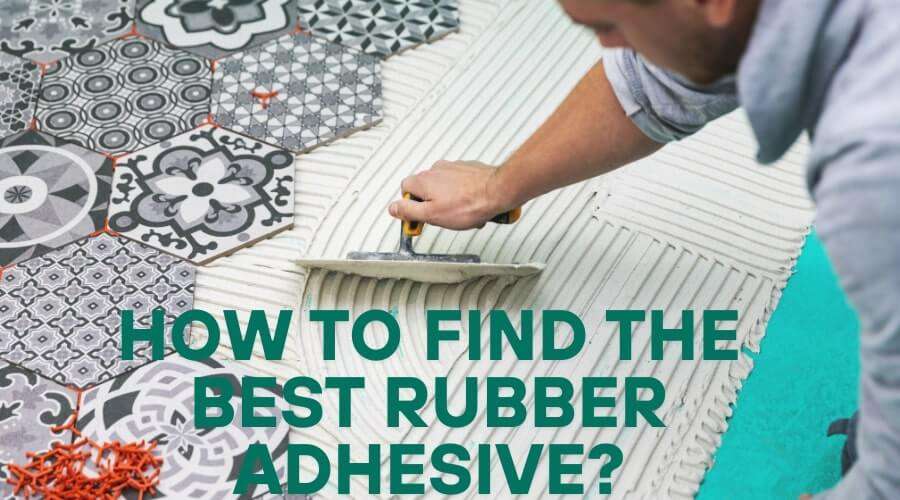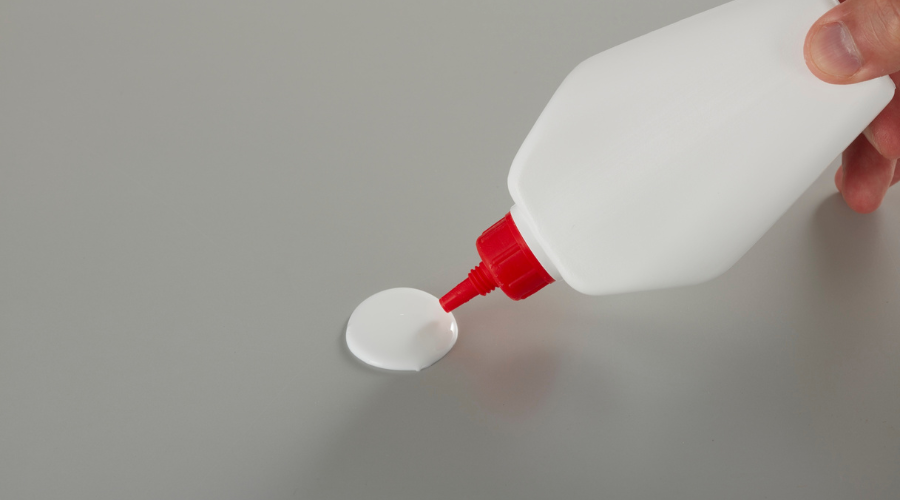
Rubber adhesives are used to give structural integrity to a wide range of products. They are the medium that is used to attach flexible surfaces and allow them to stay bonded even under challenging environments. The appropriate rubber adhesive can provide a durable, enduring bond in any kind of application or repairing activity. Given the multitude of choices available, selecting the right one can become difficult, and making the wrong choice can have devastating consequences. How do you choose the most suitable option for your project? This blog will give you comprehensive description on what rubber adhesives are, and how to steer clear of making wrong choice of adhesive which will spoil your project.
Rubber adhesive is a flexible adhesive solution which can bond virtually all surfaces like metal, plastic, fabric etc. Rubber adhesive has a specific chemical formulation made with natural or synthetic materials, which gives the adhesive its elastic properties which allows it to withstand the stresses that the external environment may impose. Rubber adhesives can come in solvent or water-based systems and include temporary and permanent bonding capabilities.
Using the incorrect type of adhesive within applications, can result in a weak bond with timely failure of products. This can decrease the warranty on the product, and safety issues during application. With the correct selection of adhesive a good, lasting bond can be achieved that can stand up against the external environment.
Rubber adhesives are of various types- some of them bond better to metal surfaces, while others bond better to fabric or plastic. So, you should know what type of adhesive you are choosing as well as the substrate material. This is clear by the fact that bonding rubber to a plastic material like polyethylene requires a different adhesive compared to bonding rubber to stainless steel.
Rubber surfaces often have mold or oils on them, and this hinders adhesion. For proper adhesion, the surface should be cleaned, and roughening the texture of the surface can give more grip to the adhesive, allowing it to make a more solid bond. To ensure that adhesion is flawless review the manufacturer guideline for surface preparation. It depends to what extent the surface preparation is required as some adhesives only stick on a very clean and dry surface while others can bond with somewhat dirty surfaces as well.
After the adhesive dries up, it will keep on being exposed to environmental factors. These are mainly temperature changes, UV radiation, moisture, and chemicals. One adhesive would deliver a solid bond at room temperature but in a high heat environment this adhesive would melt or degrade. So, knowing the surrounding environment before applying the adhesive is vital.
Rubber adhesives come in many forms from sprays to liquids that are applied by brushes. For controlled application over a small surface area that requires small brushes to large areas where spraying is the better application method. So, choosing the right mode of application is vital for covering a surface with adhesive. Industrial users make use of automatic application methods for fast application. But for small projects, aerosol spray is the better option.
Projects can be lengthy or of short duration, and since different adhesives have different curing times, some types may be more suitable for a long-term project, while others would be better for a short-term one. In high-speed assembly production or quick repairs, fast-curing adhesives are the better choice. Adhesives with a long curing time usually deliver a stronger and lasting bond, but they need to be applied in a slow and careful manner.
adhesive that is applied on rubber should also match the flexibility of rubber and should not crack or peel off if the rubber material moves below it. In many situations, the rubber is a movable part and frequently bends or stretches, and in such scenarios, the elasticity of the adhesive is really important. Adhesives that become brittle will fail in such situations.

The mechanical strength required of adhesive should also match the application. Rubber seals and gaskets don’t need strong adhesives to bind them and keep them in place. But in the case of load-bearing components, performance adhesive with a high tensile strength is the better option.
There is a whole array of rubber adhesives present in the market. All rubber types have their strengths and weaknesses.
Contact Cement: this is a perfect match for gluing two surfaces with a large area.
Cyanoacrylate (Super Glue): It is not a flexible glue but is suitable for minor repairs.
Epoxy-based Adhesives: These classes of adhesives deliver the right combination of strength and chemical resistance. But it would be too rigid for flexible rubber parts.
Silicone adhesives are a category of adhesives that are temperature-resistant and flexible and work well in outdoor environments.
Each type has its ideal use cases, and the suitability of the adhesive depends on multiple characteristics like bond line thickness, exposure conditions, and required flexibility.
In order to determine the strength of the bond made by the adhesive, a test called peel strength test is performed. This consists of bonding two surfaces with an adhesive and allowing the adhesive to fully cure. After this, the glued substrates are pulled apart with a specific angle and speed. The amount of force taken to peel the surfaces apart is measured to reveal the strength of the bond. This test is a common quality benchmark of adhesives, and those adhesives that pass it are certified with ISO or ASTM standards, which is the globally accepted standard of quality.
There are other methods also to check the quality of adhesive such as visual inspection and stress testing. However, these methods are not certified and are not usually done by a regulatory body but are popularly used by experts before large-scale application.
Failing to prepare the surface adequately is a common mistake, and the result is a weak bond prone to failure.
Using the wrong type of adhesive is another thing which results in brittle bonds.
Neglecting to consider environmental conditions to which adhesives will be exposed. For instance, exposure to moisture or UV rays can damage even premium adhesives.
Applying the wrong quantity of adhesive also impacts bond line thickness, and this results in poor performance.
Not allowing proper curing.
Selection of the right rubber adhesive isn’t just about grabbing the strongest one on the shelf. It’s about finding an adhesive that fits your materials, environment, and what you need it to do. To ensure a bond that remains reliable over time you need to have knowledge about the array of adhesives available in the market and being aware of the factors that affect their performance. Adhesive are used in every scale and nature of project and making the right choice means that whatever you are working on succeeds and stays functional in the long
Q1: What is the strongest adhesive for rubber?
A: Epoxy-based adhesives and high-strength contact adhesives like Loctite 401 and Barge Cement offer the strongest bonds for rubber.
Q2: Can rubber adhesives withstand high temperatures?
A: Yes, some adhesives, such as Permatex Black Rubber Adhesive, are designed to handle high temperatures.
Q3: How long does rubber adhesive take to dry?
A: Drying time varies by product, ranging from a few minutes (instant adhesives) to several hours (epoxy-based adhesives).
Q4: Can I use rubber adhesive on wet surfaces?
A: Most rubber adhesives require a dry surface for optimal bonding, but some waterproof options can adhere to slightly damp surfaces.
Q5: Is rubber adhesive waterproof?
A: Many rubber adhesives are waterproof, but it depends on the formulation. Always check the product specifications.
Q6: How do I remove rubber adhesive from surfaces?
A: Use adhesive removers, rubbing alcohol, or a heat gun to dissolve and remove adhesive residue.